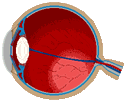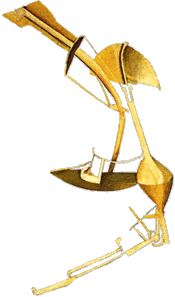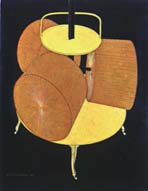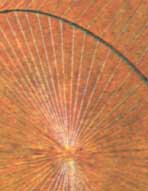| |
Inspiration
A conditional component of creativity is inspiration:
Nietzsche in his autobiography, Ecce Homo:
'Has anyone at the end of the eighteenth century a clear idea of what
poets of strong ages have called inspiration? If not, I will describe
it. - If one has the slightest residue of superstition left in one's system,
one could hardly resist altogether the idea that one is merely incarnation,
merely mouthpiece, merely a medium of overpowering forces. The concept
of revelation - in the sense that suddenly, with indescribable certainty
and subtlety, something becomes visible, audible, something that shakes
one to the last depths and throws one down - that merely describes the
facts. One hears, one does not seek; one accepts, one does not ask who
gives; like lightning, a thought flashes up, with necessity, without hesitation
regarding its form - I never had any choice.'
' A rapture whose tremendous tension occasionally discharges itself
in a flood of tears - now the pace quickens involuntarily, now it becomes
slow; one is altogether beside onself, with the distinct consciousness
of subtle shudders and one's skin creeping down to one's toes; a depth
of happiness in which even what is painful and gloomy does not seem something
opposite but rather conditioned, provoked, a necessary color in such a
superabundance of light....'
'Everything happens involuntarily in the highest degree but as in a
gale a feeling of freedom, of absoluteness, of power, of divinity. - The
involuntariness of image and metaphor is strangest of all; one no longer
has any notion of what is an image or metaphor: everything offers itself
as the nearest, most obvious, simplest expression....'
Nietzsche's experiences of inspiration were (at the very least) overpowering,
but differs in intensity - rather than in kind - from the inspiration experienced
by 'ordinary' creative people.
A popular superficial understanding of the creative process is that
it flows from idea to realization, meaning that someone gets a creative
idea, executes it, and the process is finished:
diagram: inspiration>idea>realization
LINEAR |
In some cases such an 'AHA
erlebnis' (a sudden whim, Eureka!), directly applicable, in fact could
occur, but in most cases the line between idea and realization isn't that
straight and short. Anyone who tries to create with an expectation of
a straight line from an idea to realization is almost certain set up for
failure. It is not hard to understand why so many people do not see themselves
as creative, or find creative tasks emotionally bruising, when this model
is expected to work.
|




